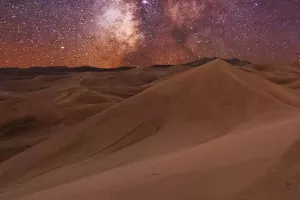The earth is a beautiful living planet and a home for human survival. As a living planet, it is naturally inseparable from plants, especially a large number of trees.
The life system of the earth is composed of plants and animals. It is with a large number of trees that the earth has a beautiful ecosystem now, and there are rich and diverse creatures.
Vegetation refers to the plant community covered in a certain area on the surface of the earth. It is the general term for the plant community covering the surface.
Different types of vegetation will form differently types under different climate conditions. Light, temperature, and rainfall can affect the growth and distribution of plants, forming different plant communities.
Vegetation is the lifeline of our world. Without them, the life of the earth has lost extraordinary basic functions. Trees support the food systems of nature and human beings and provide the materials for building homelands for countless species, including us.
However, we often treat trees as unimportant, and it seems to be able to dispose of them at will for economic benefits. Since human beings have been engaged in agricultural production about 12,000 years ago, we have cut off nearly half of global trees (about 5.8 trillion trees).
If the trees disappear overnight, the earth has no trees, and the climate of the earth will bring tremendous changes. The most obvious change is continuous drought. Many areas will become drier and more prone to extreme drought.
The impact of drought on human survival is huge. First of all, the grain is greatly reduced, and more people will fall into a state of hunger.
Vegetations are gene libraries, which preserve a variety of plants, animals, and microorganisms, and provide human beings with various important, updated natural resources.
The vegetation is closely related to the natural geographical environment, and there is a corresponding type of vegetation in a certain natural geographical environment.
The natural geographical environment is complicated, so there are many types of vegetation on the earth. Vegetation is the most sensitive composition element in the natural geographical environment and has a strong renovation effect on the environment.
Through air circulation, vegetation can better improve indoor air. Plants also inhibit various diseases by absorbing and decomposing harmful substances in the air.
According to the survey, there are more negative oxygen ions in the forest area. After inhaling the human body, it can regulate the excitement and suppression process of the cerebral cortex, improve the body's immune capacity, and have curative effects on chronic bronchitis and insomnia.
There are also many plants that can secrete sterilizers and kill surrounding germs, such as sterilization secreted by eucalyptus, and can kill tuberculosis bacteria and pneumonia germs.
The environment for our survival is inseparable from green plants, and some green plants or flowers can emit aromatic scents. The green plant itself and the flower bonsai can beautify the living environment of human beings and have an ornamental effect.
Some sensitive plants can also be planted in a certain pollution discharge area as an indicator plants for air pollution.


